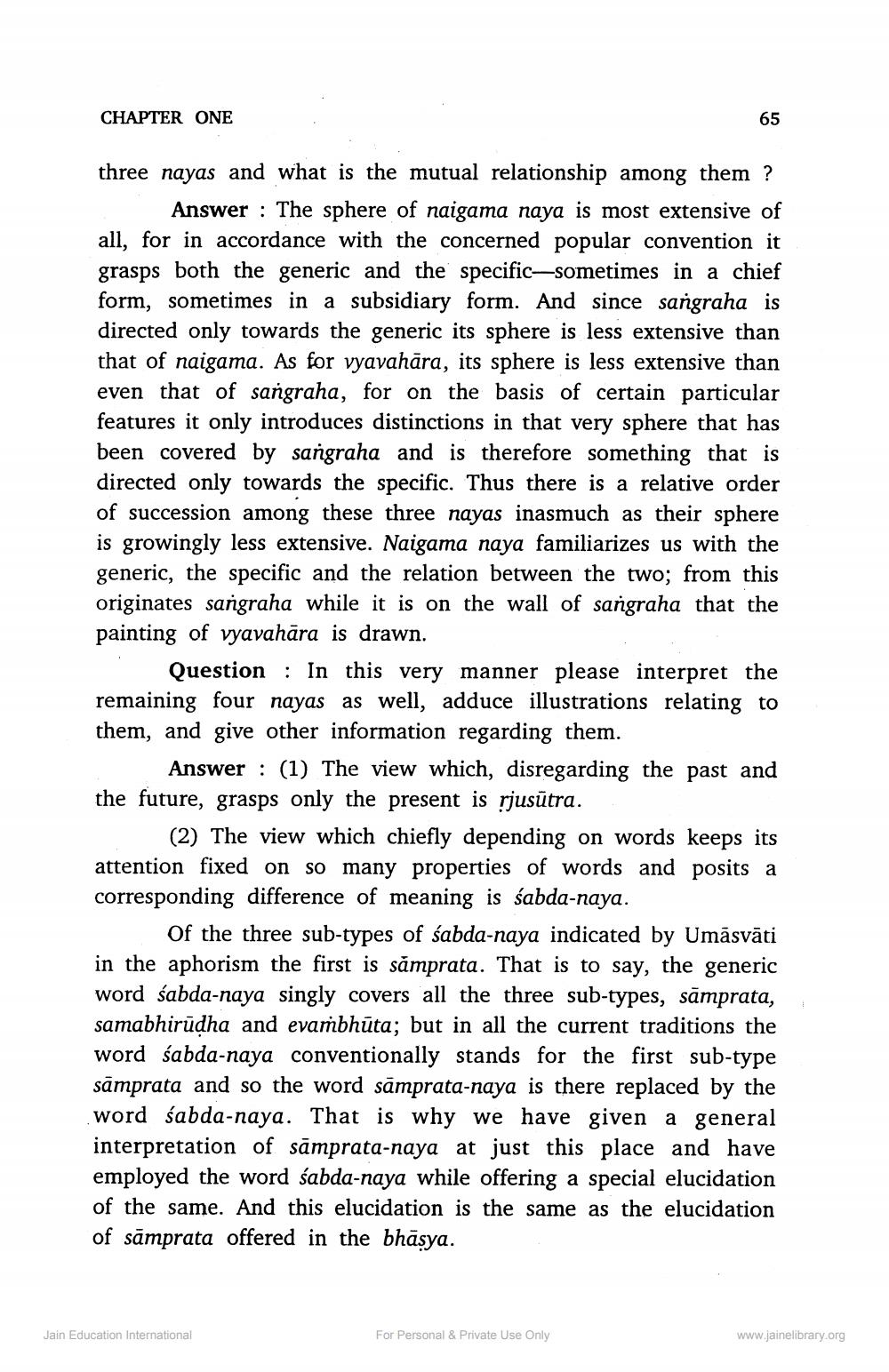________________
CHAPTER ONE
65
three nayas and what is the mutual relationship among them?
Answer : The sphere of naigama naya is most extensive of all, for in accordance with the concerned popular convention it grasps both the generic and the specific—sometimes in a chief form, sometimes in a subsidiary form. And since sangraha is directed only towards the generic its sphere is less extensive than that of naigama. As for vyavahāra, its sphere is less extensive than even that of sangraha, for on the basis of certain particular features it only introduces distinctions in that very sphere that has been covered by sangraha and is therefore something that is directed only towards the specific. Thus there is a relative order of succession among these three nayas inasmuch as their sphere is growingly less extensive. Naigama naya familiarizes us with the generic, the specific and the relation between the two; from this originates sangraha while it is on the wall of sangraha that the painting of vyavahāra is drawn.
Question : In this very manner please interpret the remaining four nayas as well, adduce illustrations relating to them, and give other information regarding them.
Answer: (1) The view which, disregarding the past and the future, grasps only the present is rjusūtra.
(2) The view which chiefly depending on words keeps its attention fixed on so many properties of words and posits a corresponding difference of meaning is sabda-naya.
Of the three sub-types of sabda-naya indicated by Umāsvāti in the aphorism the first is samprata. That is to say, the generic word śabda-naya singly covers all the three sub-types, sāmprata, samabhirūdha and evambhūta; but in all the current traditions the word śabda-naya conventionally stands for the first sub-type sāmprata and so the word sāmprata-naya is there replaced by the word sabda-naya. That is why we have given a general interpretation of sāmprata-naya at just this place and have employed the word śabda-naya while offering a special elucidation of the same. And this elucidation is the same as the elucidation of sāmprata offered in the bhāsya.
Jain Education International
For Personal & Private Use Only
www.jainelibrary.org




